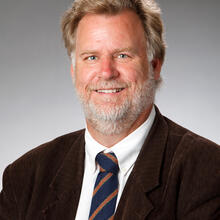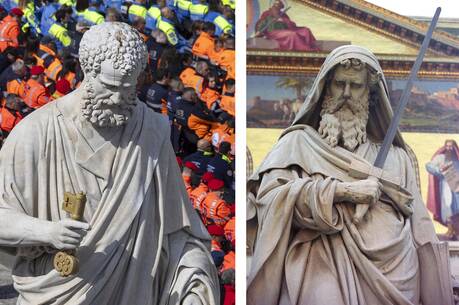The Great Multitude
It is easy to forget how few Christians there were when the church began. Acts 1:15 says there were 120 people gathered together after Pentecost. Acts also narrates the mass conversions of many people, sometimes in the thousands, but Robert M. Grant said that “one must always remember that figures in antiquity...were part of rhetorical exercises.” These numbers are intended to indicate that the Holy Spirit was at work among the people, both in Jerusalem and increasingly in the Gentile world; they are not literal demographic data. Rodney Stark, a sociologist with expertise in religious conversion, has calculated that in the year 40 there might have been only 1,000 Christians and by the year 100 only 7,530.
While none of these numbers is exact, this inauspicious beginning renders the task of the church in these first decades even more remarkable. The church, formed after Easter in the certainty that Jesus Christ had been raised from the dead, was emboldened with a missionary impulse to be “a light to the Gentiles, that you may be an instrument of salvation to the ends of the earth.” There are two things to keep in mind here. One was their wondrous realization that the message of salvation was for all peoples; the other was the shocking fact that it was the apostles and disciples of Jesus who would bring the Gospel message to the whole world. Sometimes the early church faced opposition and persecution in preaching Jesus Christ, while at other times they faced indifference and ignorance.
Still, there were times when their message met willing hearers. Jesus said: “My sheep hear my voice; I know them, and they follow me. I give them eternal life, and they shall never perish.” It was this message of eternal life that drew people to the church, but it was also the manner in which the early Christians lived out their lives, no matter the situations they faced, that caused people to listen to them and to heed the call of Jesus. All who answered the call and belonged to the church, whether Jew or Gentile, no matter their station in life, were called to belong to one flock.
How does today’s reading from the Book of Revelation fit in the context of a practical survey of early Christian growth? While a difficult text to interpret, in one sense Revelation is always crystal clear: The hope of the church rests with the Lamb who was slain. This counter-cultural and counter-intuitive victory was won by the sacrifice of the Lamb when it seemed the enemies of sin and death had triumphed. In John’s visions, though, the Lamb is now seen enthroned and worshiped.
What is even more remarkable is that these visions reveal “a great multitude, which no one could count, from every nation, race, people, and tongue.” But in the first century, no great multitude of people had yet been converted; there were not yet saints “from every nation, race, people, and tongue.” John’s vision represents not only the hope of eternal life, but a sign of hope for the early church in their missionary task, which is a sign of hope for the whole world.
Before John had seen any practical evidence of the numerical success of the church, and even in the midst of persecution—he speaks of those “who have survived the time of great distress”—he envisions a spiritual reality of the joy of life “before God’s throne” for a great multitude. This multitude, sheltered by God, “will not hunger or thirst anymore, nor will the sun or any heat strike them. For the Lamb who is in the center of the throne will shepherd them and lead them to springs of life-giving water, and God will wipe away every tear from their eyes.”
It is this hope, carried by the first disciples, which made John’s prophetic vision a reality. Multitudes would respond to the shepherd’s voice, knowing that with him there would be comfort, every tear wiped away, safe in the presence of God for eternity.
This article also appeared in print, under the headline “The Great Multitude,” in the April 8-15, 2013, issue.







